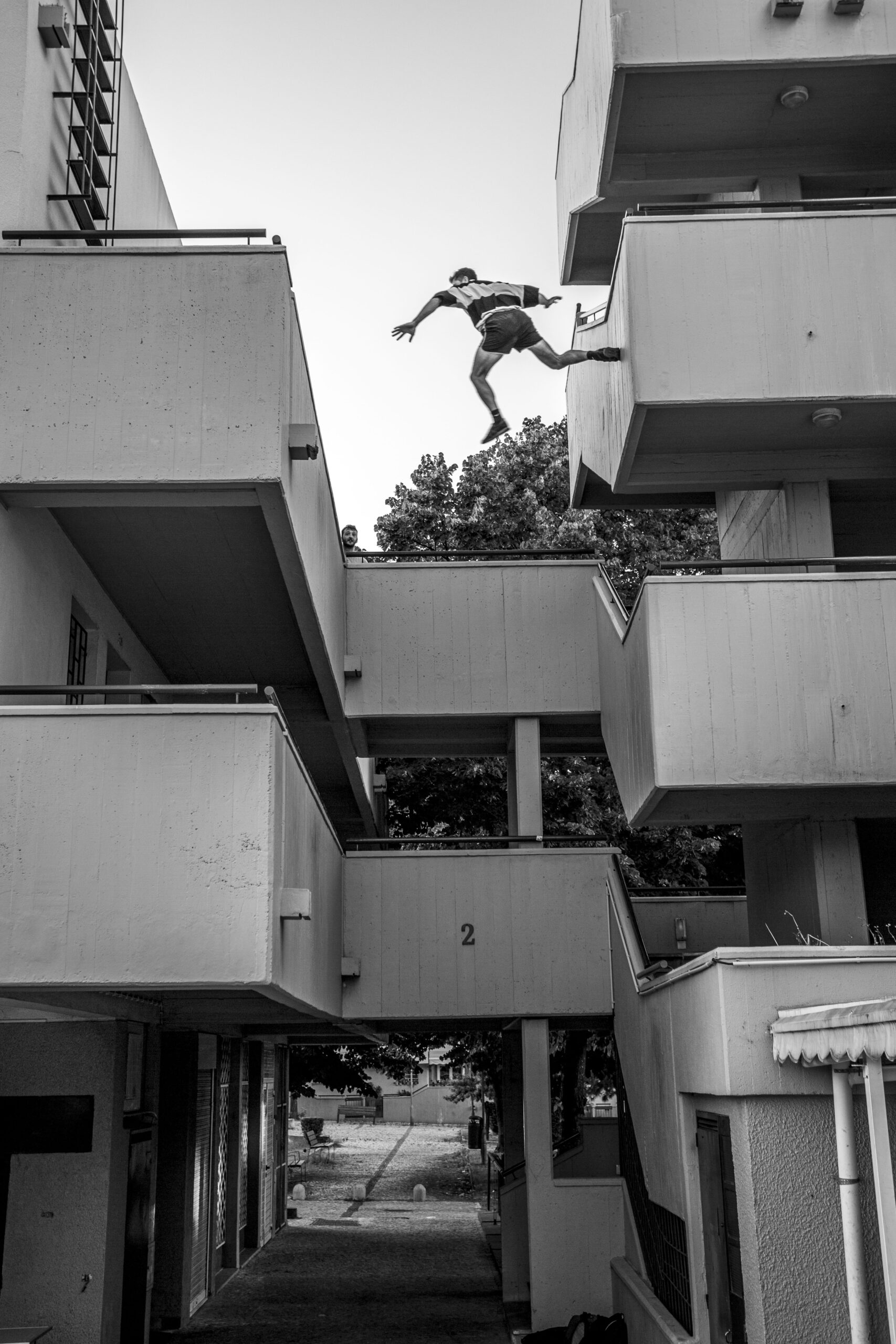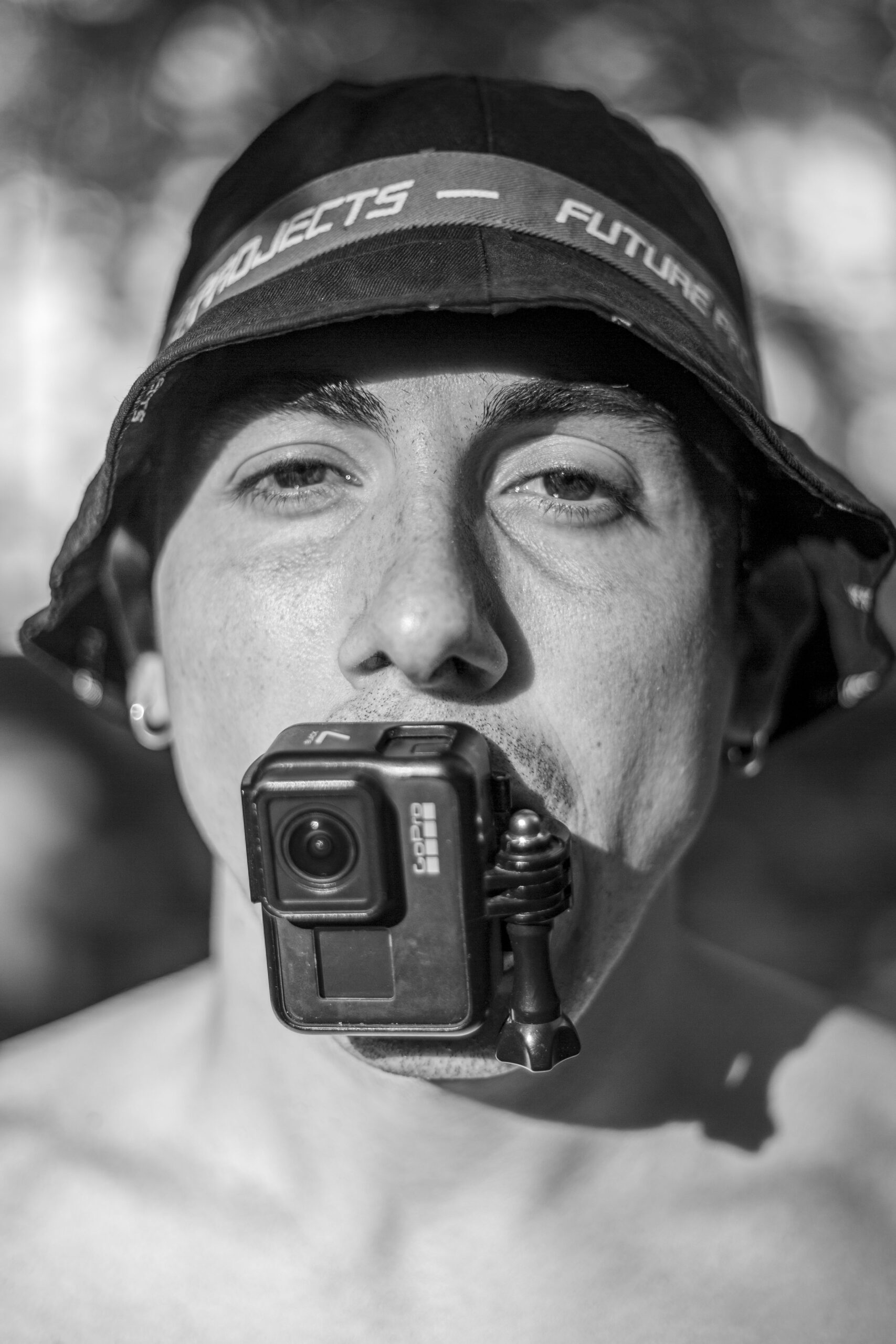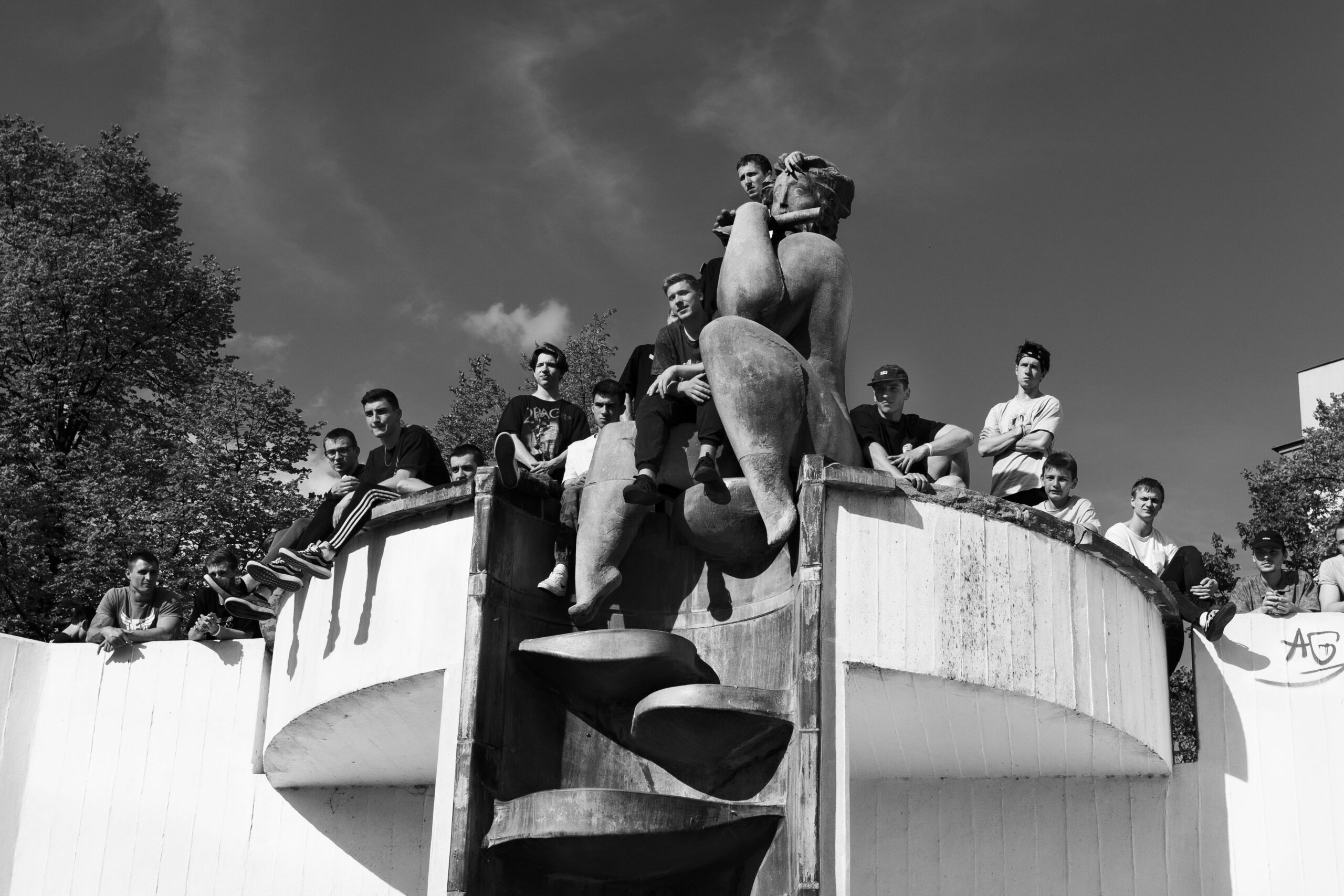







Heidi: When did your passion for doing the sport of parkour/freerunning start and eventually evolve into photography as a practice?
Matteo: I started practicing parkour in 2014, in my second year of high school.
I started in a gym called Total Natural Training, owned by one of Milan’s oldest parkour groups: Milanmonkeys. It was newly opened at the time, so I was one of the first subscribers. I used to be a bit of a loner, often feeling too shy to express myself through words, so I found a way to express myself through movement.
This was my life back then. When I got back home from the gym I used to hop on YouTube to watch parkour videos and take notes of what I wanted to work on next. I would always buy all of Milanmonkey’s merchandise as soon as it was available and wear oversized gym pants with crazy graphics every day; the height of parkour fashion at the time.
After three years of training indoors I moved on from the gym and started training on the streets, finally getting in touch with the wider parkour community. I started going to jam sessions and other events that attract parkour athletes from all over the world, exploring parts of the city I didn’t even know existed.
It was the first sport I fell in love with, it helped me become more confident with my body and make good friendships along the way.
When I began my photography studies I felt drawn to the topic of subcultures. To better understand how passions work I felt the need to first dive back into my own and study it as something between a photographer and a practitioner.
Rediscovering such an important part of my life through the lens of a camera felt almost spiritual.
How did looking at urban space and visualizing sequences, textures, and light inform both your freerunning and the photography you wanted to shoot?
Parkour content is mostly displayed in video, the viewer will see every instance of a stunt. Photography works very differently.
Based on what the athlete is going to do, you have to figure out which part of the trick is the best one to show, often having to predict when to press the shutter.
Many tricks are spectacular in real life, but when frozen in place don’t look all that interesting. That’s when you have to rely on other elements to make the photo speak, like a very dramatic light, a specific angle, or a longer exposure. These challenges were exciting to tackle, and taught me a lot about how to approach fast moving subjects with the camera
Why black and white for this body of work?
Urban architecture is a fundamental component of parkour. There’s a tight interaction between the athlete and the elements of the city landscape. The grayscale highlights this connection by presenting both people and the environment with the same color and better defines the geometry of the spots, and areas of the city where the architecture allows an acrobatic interaction.
This work involves artistic movement and an intimate connection to urban space and architecture. What influences did you draw from?
One of my favorite activities outside of training was scouting for spots. We would put together a little group, buy “provisions” and make little expeditions in the city suburbs or in some towns close by; take pictures of what we considered interesting, and publish them on Facebook. This eventually translated into my love for urbexing, the exploration of abandoned buildings, which also has a widespread and active community.